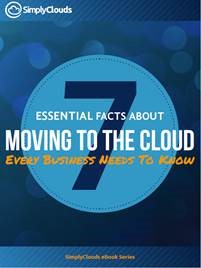7 Essential Facts About Moving to the Cloud
Learn about 7 important facts every business needs to know before moving to the cloud.

We guarantee 99.9% uptime, and your data is protected by enterprise-grade firewalls and intrusion detection systems, with 24/7 monitoring, guarded access, and surveillance.
SimplyClouds has been great from the start. They understood my issues and had instant solutions. I used to have to visit my office regularly for urgent issues out of hours but now I can access everything I need wherever I am. Everything is much more convenient, saves me money, but more importantly, saves me so much time! Thanks SimplyClouds.

Simon Bonello
Managing Partner, Bigger Picture
We have been a satisfied customer of SimplyClouds. They understand our requirements and do not use a one 'one size fits all' approach when it comes to the cloud. As our company grows, we will continue to work closely with SimplyClouds. They have been, and will continue to be, and important contributor to our success.

Mike Moore
VP of Information Systems, Ridge Technologies
I've always been very satisfied with the standard of integrity, commitment, and customer service provided by SimplyClouds, as well as their extensive knowledge and breadth of service offerings. They know what they’re doing, and it shows.

John Farazian
President & CEO, Octant
We used SimplyClouds to move some of our applications and services to the cloud and found the experience to be smooth and painless. We chose SimplyClouds because of their easy-to-use marketplace, knowledgeable staff, and impressive record of satisfied clients. We are very pleased with the flexibility of their platform and the cost-savings of moving to the cloud.

Richard Martoglio
Executive Vice President, DTI




Learn about 7 important facts every business needs to know before moving to the cloud.

Businesses are constantly looking for new ways to improve the development process and deliver more value to users. Serverless architecture is one such approach that offers a number of benefits over traditional server-based infrastructure, including better scalability, greater flexibility, faster time to market, and more cost-effective software development.